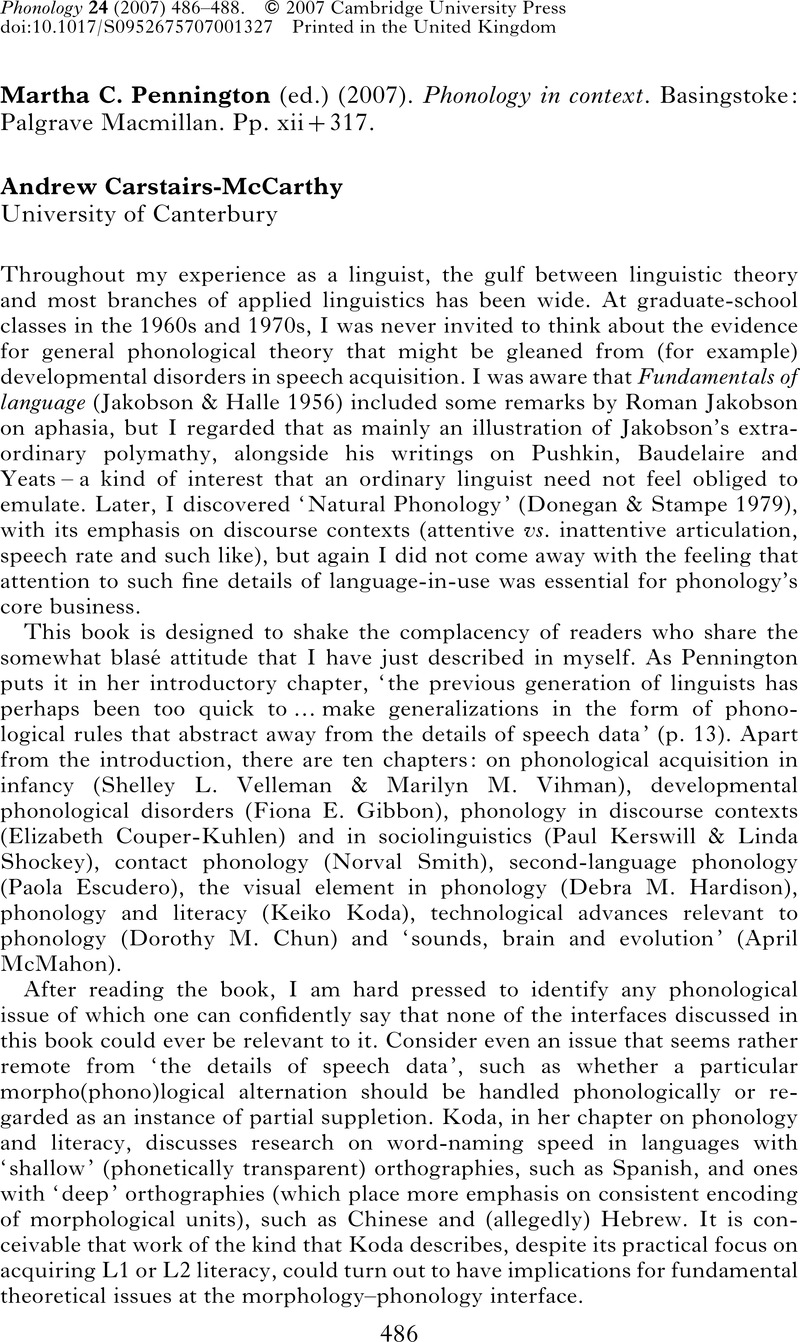No CrossRef data available.
Article contents
Martha C. Pennington (ed.) (2007). Phonology in context. Basingstoke: Palgrave Macmillan. Pp. xii+317.
Review products
Martha C. Pennington (ed.) (2007). Phonology in context. Basingstoke: Palgrave Macmillan. Pp. xii+317.
Published online by Cambridge University Press: 30 November 2007
Abstract
An abstract is not available for this content so a preview has been provided. Please use the Get access link above for information on how to access this content.

- Type
- Book Review
- Information
- Copyright
- Copyright © Cambridge University Press 2007
References
Donegan, Patricia J. & Stampe, David (1979). The study of natural phonology. In Dinnsen, Daniel A. (ed.) Current approaches to phonological theory. Bloomington: Indiana University Press. 126–173.Google Scholar
Hauser, Marc D., Chomsky, Noam & Fitch, Tecumseh W. (2002). The faculty of language: what is it, who has it, and how did it evolve? Science 298. 1569–1579.CrossRefGoogle ScholarPubMed
Kelly, John & Local, John (1989). Doing phonology: observing, recording, interpreting. Manchester: Manchester University Press.Google Scholar
MacNeilage, Peter F. (1998). The frame/content theory of evolution of speech production. Behavioral and Brain Sciences 21. 499–511.CrossRefGoogle ScholarPubMed
Pinker, Steven & Jackendoff, Ray (2005). The faculty of language: what's special about it? Cognition 95. 201–236.CrossRefGoogle Scholar


